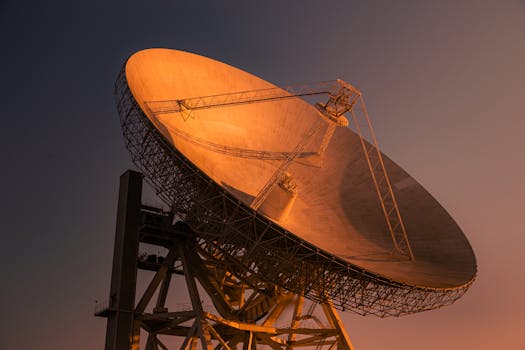Satellite Telecommunications 2023: Key Developments and What They Mean for the Industry

Satellite Telecommunications 2023: Key Developments and What They Mean for the Industry
Satellite Telecommunications 2023 has been a transformative year for the satellite telecommunications industry, with numerous key developments that will have far-reaching implications for the future of global communication. The industry has experienced significant growth, driven by advancements in technology, increased demand for satellite-based services, and the expanding need for global connectivity.
The Satellite Telecommunications 2023 market has seen substantial investments in new satellite constellations, such as the Starlink project by SpaceX and the Kuiper Systems by Amazon. These constellations aim to provide high-speed, low-latency internet services to remote and underserved areas, bridging the digital divide and enabling access to a wide range of applications and services.
Advancements in Satellite Technology
One of the primary drivers of the satellite telecommunications industry’s growth is the rapid advancement in satellite technology. The development of smaller, more efficient, and cost-effective satellites has made it possible for companies to launch constellations of satellites into orbit, providing global coverage and enabling a wide range of services. The use of advanced materials, such as carbon fiber and aluminum, has also improved the durability and lifespan of satellites, reducing the need for frequent replacements and minimizing the risk of satellite failure.
The integration of artificial intelligence (AI) and machine learning (ML) into satellite systems has also become a key focus area for the industry. AI and ML can be used to optimize satellite performance, predict and prevent errors, and improve the overall efficiency of satellite operations. This has led to the development of more autonomous satellite systems, which can operate with minimal human intervention, reducing the risk of human error and improving the reliability of satellite services.
Impact on the Industry
The key developments in the satellite telecommunications industry will have a significant impact on the future of global communication. The increased availability of high-speed, low-latency internet services will enable new applications and services, such as remote healthcare, online education, and virtual reality. The expansion of satellite-based services will also create new opportunities for businesses, governments, and individuals, enabling them to access new markets, connect with remote communities, and participate in the global economy.
However, the growth of the satellite telecommunications industry also raises concerns about the environmental impact of satellite launches and the increasing amount of space debris in Earth’s orbit. The industry will need to address these concerns through the development of sustainable launch technologies, responsible satellite operations, and effective debris removal strategies.
Conclusion
In conclusion, the satellite telecommunications industry has experienced significant developments in 2023, driven by advancements in technology, increased demand for satellite-based services, and the expanding need for global connectivity. The key developments in the industry will have far-reaching implications for the future of global communication, enabling new applications and services, creating new opportunities for businesses and individuals, and shaping the future of the industry.